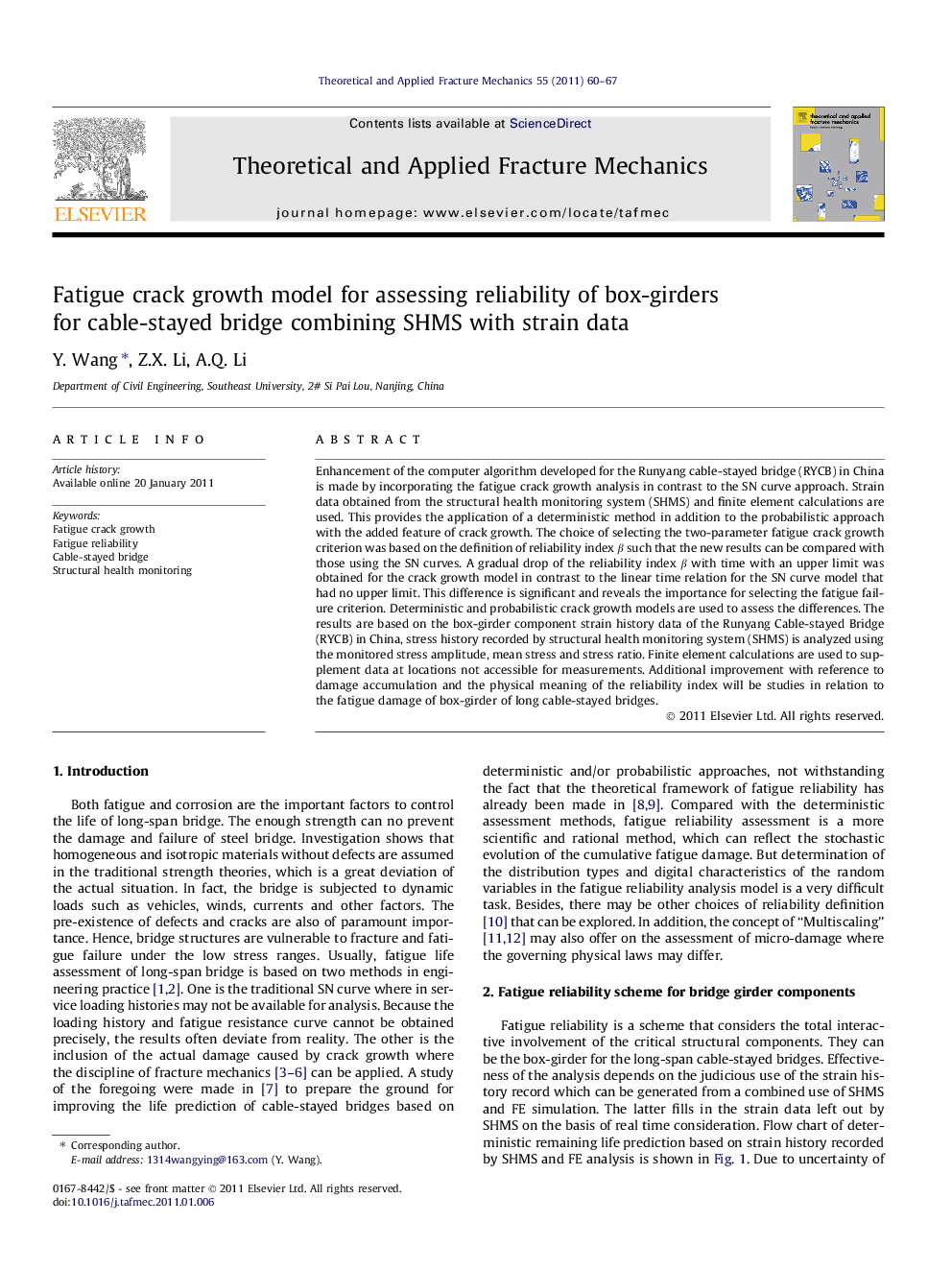| Article ID | Journal | Published Year | Pages | File Type |
|---|---|---|---|---|
| 808757 | Theoretical and Applied Fracture Mechanics | 2011 | 8 Pages |
Enhancement of the computer algorithm developed for the Runyang cable-stayed bridge (RYCB) in China is made by incorporating the fatigue crack growth analysis in contrast to the SN curve approach. Strain data obtained from the structural health monitoring system (SHMS) and finite element calculations are used. This provides the application of a deterministic method in addition to the probabilistic approach with the added feature of crack growth. The choice of selecting the two-parameter fatigue crack growth criterion was based on the definition of reliability index β such that the new results can be compared with those using the SN curves. A gradual drop of the reliability index β with time with an upper limit was obtained for the crack growth model in contrast to the linear time relation for the SN curve model that had no upper limit. This difference is significant and reveals the importance for selecting the fatigue failure criterion. Deterministic and probabilistic crack growth models are used to assess the differences. The results are based on the box-girder component strain history data of the Runyang Cable-stayed Bridge (RYCB) in China, stress history recorded by structural health monitoring system (SHMS) is analyzed using the monitored stress amplitude, mean stress and stress ratio. Finite element calculations are used to supplement data at locations not accessible for measurements. Additional improvement with reference to damage accumulation and the physical meaning of the reliability index will be studies in relation to the fatigue damage of box-girder of long cable-stayed bridges.
